
Theme 4
Informed Decisions
The purpose of data collection and modelling is to learn more about the complex systems that characterise the world we live in, and make the best possible decisions about their operation. Under this theme we develop new decision-making methodologies, and exploit the outcomes from the Challenging Data, Multiscale Models, and Enabling Algorithms themes to make decisions that benefit society, by characterising optimal decision-making strategies over a range of timescales. We work closely with our Partner Organisations and Industry Affiliate Members to translate the outcomes of this theme into real world outcomes with impact.
People
KEY ACHIEVEMENTS
As promised, 2021 was a stellar year for the Informed Decisions Theme, with a multitude of research and applied projects, multi-disciplinary and multi-institutional collaborations and innovative industry-relevant outputs. The projects included the conclusion of work from previous years as well as new endeavours and collaborations, many of which will continue into 2022 and beyond. The following cameos illustrate these achievements through the three ACEMS lenses: Healthy People, Sustainable Environments, Prosperous Societies.
HEALTHY PEOPLE
Following the enormous success of the first phase of the Australian Cancer Atlas (ACA), the second phase of the Atlas commenced in March 2021. The ACA is an online tool offering insights into the spatial differences in population rates of cancer diagnoses and survival following a cancer diagnosis. It has been used broadly by health services, researchers, government and in tertiary education. The second phase aims to expand the information to include spatio-temporal modelling, cancer risk factors, cancer screening, treatment and absolute measures of the cancer burden. Visualisation and communication of uncertainty are again key areas of investigation. The project, which is co-led by ACEMS researchers, currently involves three PhD students, two Masters students and researchers from four different organisations and is attracting collaborators worldwide.

The ACA team: Upeksha Chandrasiri (CCQ), Darren Wraith (QUT), Joanne Aitken (CCQ), Jess Cameron (CCQ), Conor Hassan (QUT/ACEMS), Kerrie Mengersen (QUT/ACEMS), Peter Baade (QUT), Jesse Travaini (QUT), Susanna Cramb (QUT/ACEMS), Paramita Dasgupta (CCQ). Of the boxes in the left-hand corner: Top-left: Yuxin Huang (QUT); Top-centre: Helen Thompson (QUT); Top-right: David Smith (NSWCC); Bottom-left: Jamie Hogg (QUT/ACEMS); Bottom-centre: Letitia Sabburg (QUT); Bottom-right: Ankur Kohar (NSWCC). Other team members include Thom Saunders, Gavin Winter and others from the QUT ViseR group. ACEMS Chief Investigator Professor Louise Ryan (UTS/ACEMS) is a member of the ACA Advisory Board.
ACEMS has supported a number of postgraduate students to undertake research aligned to the Australian Cancer Atlas. These students have been drawn from multiple disciplines (statistics, machine learning, visualisation) and multiple nodes (Monash, UNSW, QUT). For example, as an ACEMS PhD student, Farzana Jahan developed Bayesian meta-analysis models to utilise summary information available from the ACA to unpack the burden of different cancer types in major cities, regional and rural Australia. Two papers were published in high-ranking journals as a result of this analysis. After graduation, Farzana was admitted as an ACEMS Associate Investigator and took up a postdoc position in which she extended the models to investigate the impact on health of poor air quality from Australian bushfires. She also worked with a research team in the Prince Charles Hospital to model their patient data in order to make informed decisions of using newer types of anticoagulants. These are areas of ongoing research. Farzana is preparing to leave ACEMS to take up a lectureship at Murdoch University, Western Australia.
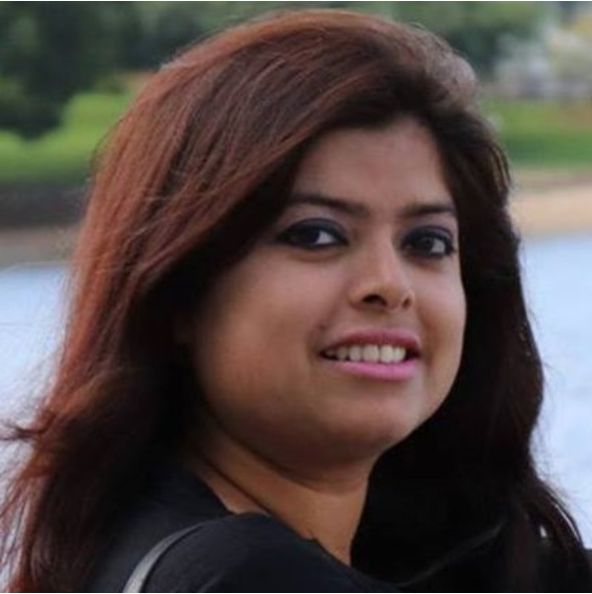
Although my research projects are quite different, they all involve statistical modelling to gain insights from real world data, which can aid in better decision making. The tools and methods that I develop can also be used in other application contexts.”
Farzana Jahan
ACEMS AI James McGree is an expert in optimal experimental design. In 2021, the CLARITY trial – a two-arm, multi-centre, randomised controlled trial – was run to determine the effectiveness of angiotensin receptor blockers (ARBs) in reducing the duration and severity of lung failure in patients with COVID-19 (funded by the Medical Research Future Fund; trial protocol in Hockham et al. (2021)). This trial was designed by QUT in collaboration with Adaptive Health Intelligence. Due to uncertainty about the effectiveness of ARBs as a treatment for COVID and the urgent need to find effective treatments, the trial was designed within a Bayesian inference framework with an adaptive sample size such that flexibility could be offered for stopping early for effectiveness or futility. The statistical analysis protocol for this trial has been submitted for publication (McGree, et al., 2021), and the trial is currently ongoing with the first planned analysis imminent.
James also proposed a new approach to conduct adaptive N-of-1 clinical trials (Senarathne et al. (2020)) that formed the basis for designing a precision medicine clinical platform for cystic fibrosis (BEAT CF). A proposal to fund this platform was submitted in 2021 to the Medical Research Future Fund, and it was recently announced as being successful ($2.1M over 3 years). The trial is planned to start in 2022. This work was conducted in collaboration with the University of Newcastle and the John Hunter Hospital. In addition, in 2021, Bayesian design methods were used to sequentially collect data in robotics (Cooper et al., 2021), and more standard design methods were used to design N-of-1 trials (McDonald et al., 2021, Bashford et al., 2021).
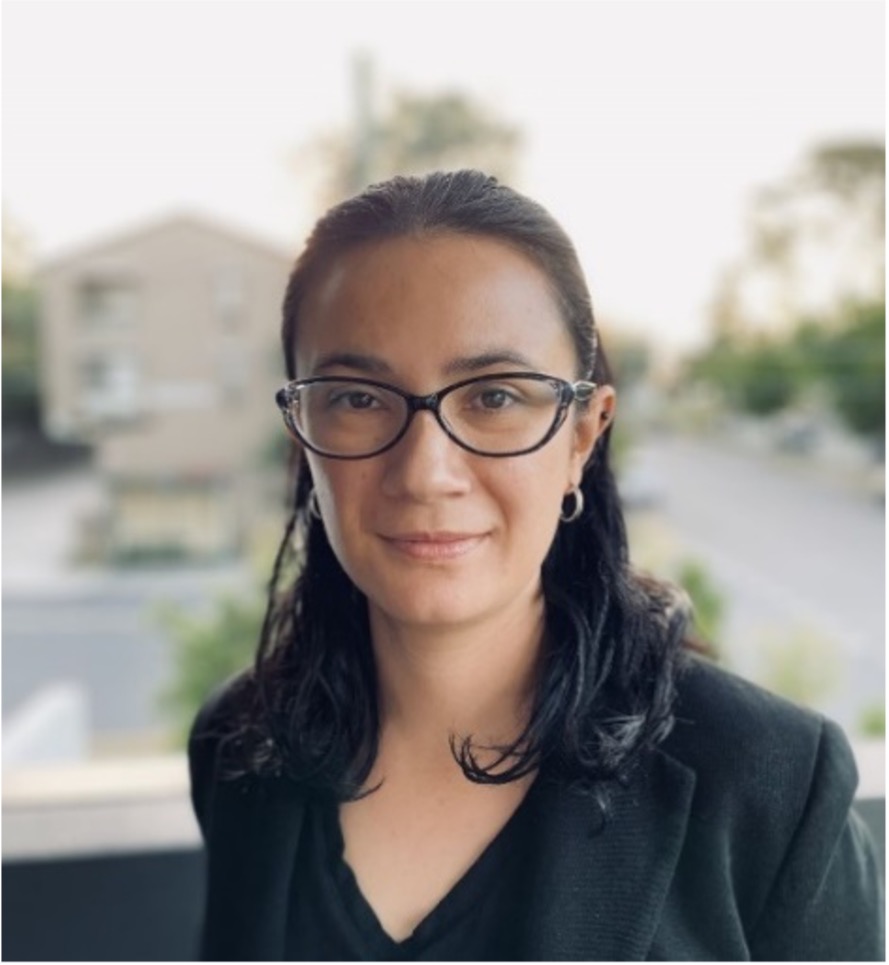
ACEMS Research Fellow Jessica Benitez Mendieta, together with AI Zhiyong Li and CI You-Gan Wang, works on the development of new methods for the biomechanical evaluation of blood vessels based on medical imaging. The analyses are performed using 4D computed tomography data from patients with cardiovascular diseases (CVD) such as atherosclerosis and aneurysms. The progression of atherosclerosis is a gradual process and most of the time is asymptomatic until a catastrophic event occurs, such as strokes. Similarly, an intracranial aneurysm is the bulging of the cerebral artery due to the weakening of the vessel wall. The progression of the aneurysm could result in the rupture of the vessel wall leading to a subarachnoid haemorrhage. The formation and progression of atherosclerosis and aneurysm are closely linked to abnormal blood flow behaviour and mechanical forces acting on the vessel wall. Therefore, biomechanical computational analysis and biomechanical information extracted from medical imaging can provide further insights into the potential rupture of an atherosclerosis plaque or aneurysm.
Jessica and her team have developed volume calculations and strain analyses of aneurysms, modelled irregular pulsation and inflammation on the wall of an aneurysm, leading to visualisation of the regions of an aneurysm with a high probability of rupture. They have also undertaken biomechanical computational analyses using fluid-structure interaction analysis based on patient-specific geometries extracted from MRI. The resultant blood flow patterns and wall stress information can help to identify potential rupture locations.
ACEMS researchers were also engaged in a wide range of projects related to the COVID-19 pandemic. One such project focused on developing a framework for assessing and easing global COVID-19 travel restrictions. Together with international researchers from the USA (Harvard) and Switzerland (USI), ACEMS AI Chris Drovandi and CI Kerrie Mengersen developed a flexible network meta-population model to compare the effectiveness of international travel policies, with a focus on evaluating the benefit of policy coordination. Given the nature of the complex stochastic disease transmission model, approximate Bayesian computation was employed to estimate parameters of interest. Based on simulation and theoretical insights, it was found that international airline travel may resume with up to 50% of the pre-pandemic level with pandemic control comparable to that of a complete shutdown of all airline travel. Their results demonstrated that global coordination is necessary to allow for maximum travel with minimum effect on viral spread.


Left: The airline traffic network of countries in the top 5% of mutual global airline travel volume in the first two weeks of June 2020. Each node corresponds to a country and thicker edges carry more travel. Right: The predicted average number of undetected COVID-19 cases for different travel regulation policies: no travel restrictions (“fully open”), no travel permitted (“fully closed”) and threshold on number of daily undetected cases (“average control”).
ACEMS AI Edgar Santos-Fernandez led another international collaboration with researchers from Switzerland (USI) and the USA (UC Irvine) to identify clusters of countries that had similar complexity of response to the COVID-19 pandemic. Using a mixture of Pareto distributions, they identified the intrinsic dimension (ID) of the per-capita numbers of cases, deaths and a lockdown stringency index for each country for the years 2020-2021. The researchers found that these data could be projected onto two low-dimensional manifolds, with high-income countries skewed towards the lower ID manifold, likely arising from aging populations, comorbidities and increased per capita mortality burden from COVID-19.
In another COVID-19 study, ACEMS PhD student Raiha Browning worked with international colleagues from the UK (Oxford) and France (Paris) to evaluate whether the complex dynamics of the pandemic could be described by a simple discrete-time self-exciting model. If so, this would facilitate fast cross-country comparisons and global evaluation of changes in the pandemic. A Hawkes Process (HP) is a self-exciting point process, such that past events in the process increase the short-term probability of future events occurring. This can be used to model an epidemic in which a disease spreads by an infected person transmitting the infection to other people. The transmission rate λ(t|H_t) over time t, given the history of the process H_t, is determined by a baseline process and a triggering function governed by the time since the initial event:

Applications of HPs include brain activity, crime, financial markets, social media interactions, seismic activity and terrorism. The researchers modelled different phases of the pandemic based on the daily number of deaths for ten countries from February 2020 to February 2021. They found that the background rate is generally unstable in the initial exponential growth phase but declined when countries implemented lockdown procedures and increased again after restrictions on travel and mobility were relaxed. The triggering kernel was generally higher in the first phase than subsequent phases.

The estimated number of daily deaths and 95% credible intervals, compared to the observed data (solid line), for six of the ten countries during the first two phases of the pandemic.
ACEMS CI Louise Ryan has continued her collaboration with colleagues Joseph and Sandra Jacobson at Wayne State University in the United States. Louise is a Co-PI on a large project funded by the US National Institutes of Health to study impact of exposure to alcohol during pregnancy. While it is of course known that alcohol is best avoided during pregnancy, it is critical that more be known about exposure levels that result in clinically important adverse effects in terms of infant development, so that appropriate diagnoses can be made, and effective interventions designed.
The project involves the integration of data from six large longitudinal cohorts, each involving measurement of a large suite of neuro-cognitive outcomes. Under Louise’s guidance, project statisticians have been developing and applying sophisticated statistical methods to handle the complex multivariate nature of the data. KD Dang worked on the project, first as an ACEMS-funded Research Fellow and later as a Lecturer at the University of Melbourne. Richard Cook from University of Waterloo is also involved in the project and was recently awarded a multi-year grant from the Canadian government to undertake further statistical methods research motivated by this project.
SUSTAINABLE ENVIRONMENTS
ACEMS has continued to lead research into monitoring our seagrass beds, waterways and the Great Barrier Reef. Some exemplar projects are described here.
Seagrass beds are vital to the world’s shallow marine systems. In addition to stabilising the ocean floor, they provide food, habitat, and nurseries for a wide variety of marine animals. They are also a sentinel for the health of our coastal ecosystems. In collaboration with national partners (Edith Cowan University) and international partners (IFREMER, France), ACEMS PhD student Paula Sobenko Hatum is developing a Dynamic Bayesian Network model to better understand and predict the resilience of marine ecosystems to extreme climate events. By building ensembles of climate models, Paula’s work will investigate the effect of marine heatwaves and climate change and help to predict patterns of change in the oceans of the future. Paula’s work builds upon earlier work on seagrass by then AIMS-ACEMS co-funded Research Fellow Paul Wu, who is now an ACEMS Associate Investigator and co-supervisor of Paula along with ACEMS CI Kerrie Mengersen.

A seagrass bed before (a) and after (b) a marine heatwave in Shark Bay, Western Australia.
Another impactful project between ACEMS and AIMS focused on the role of Triton sea snails in combating the Crown of Thorns Starfish (COTS), a devastating predator of coral around the world. The mathematical and statistical models developed by ACEMS AI Patricia Menendez provided new knowledge about the behaviour and home range of COTS and Triton snails. The new algorithms were packaged into R routines and an R software package “Tricotraks”, as well as an interactive dashboard to visualise tracks, home range area, triton attacks and hotspot areas inside an aquarium. Learn more about the project by watching this video of a presentation by ACEMS’ AI Patricia Menendez from ACEMS Final Retreat
Highlights of Presentation on the Triton & COTS Collaborative Research Project
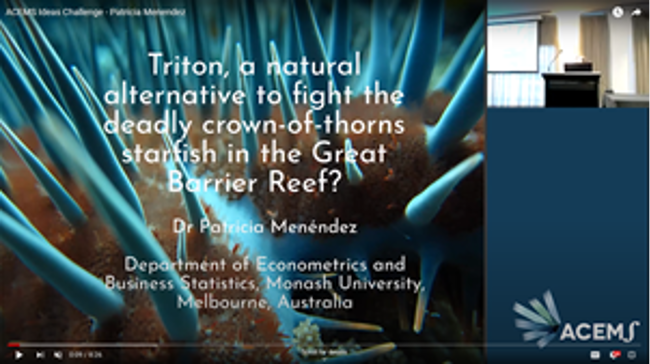
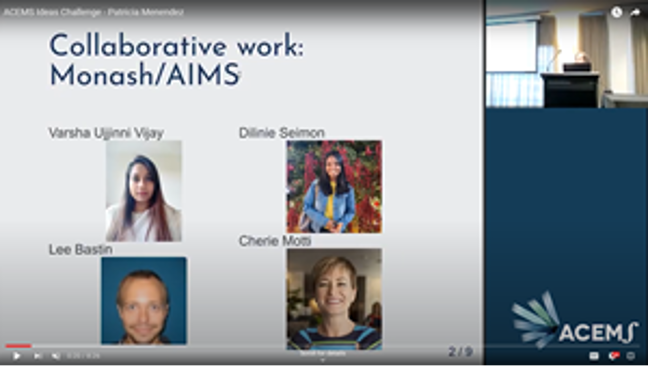

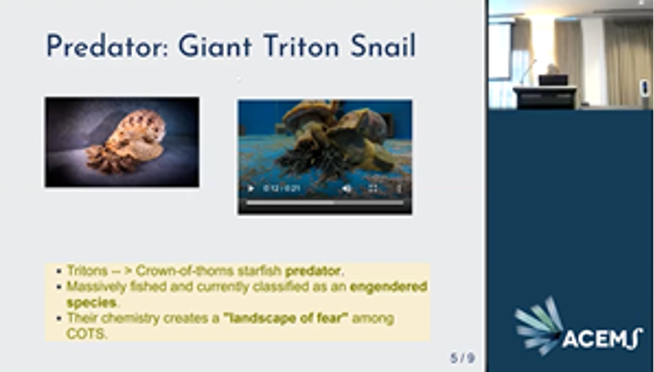
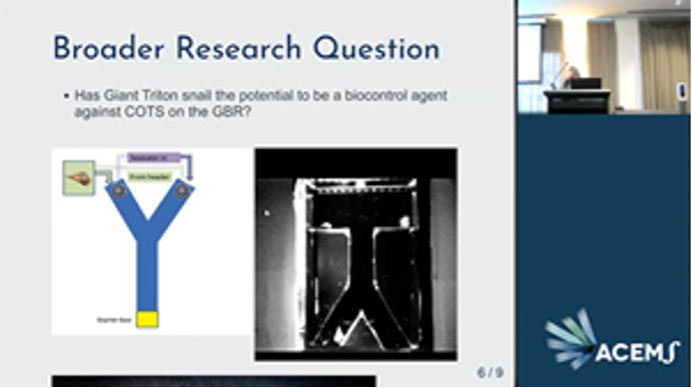

ACEMS also continued to collaborate with AIMS to develop an open-access cloud-based platform ReefCloud.ai that uses machine learning and artificial intelligence to analyse photographs of coral reefs to rapidly extract and share data. ReefCloud.ai won the Asia-Pacific Spatial Excellence Awards (APSEA) award in the Environment and Sustainability category in the Pacific region in 2021. APSEA celebrates the achievements of top spatial information enterprises and individuals. ReefCloud is now a finalist for the global award to be announced in May 2022. Other supporters of ReefCloud include: Reef scientists involved in its co-design from Pacific island nations (including: Palau International Coral Reef Center, University of South Pacific, Marine Ecology Consulting and Wildlife Conservation Society Fiji); plus Accenture and DFAT as in-kind/financial supporters, respectively.

ReefCloud.ai Wins APSEA Award
2021 APSEA winners in the Pacific Region. The Award for Environment and Sustainability was awarded for ReefCloud. The winners are: Australian Institute of Marine Science, QUT, Accenture Australia, Palau International Coral Reef Centre, Wildlife Conservation Society Fiji, Marine Ecology Consulting and University of the South Pacific. Pictured accepting the award are AIMS’ Emma Kennedy (left) and ACEMS AI Julie Vercelloni (right).
ACEMS has supported a successful AIMS-led pilot project ‘Supporting Traditional Owner Marine Monitoring Through Two-Way Knowledge Sharing’, at the forefront of collaborative defence of Sea Country, with AIMS’ Traditional Owner partners. Through the Northern Australian Marine Monitoring Alliance (NAMMA), researchers at AIMS and ACEMS have worked in partnership with the Indigenous Bardi and Jawi communities in Northern Western Australia to develop a statistical model to support monitoring and management of Sea Country. The project delivered benefits for both AIMS and its Traditional Owner partners in sharing data. A key outcome of this work is the analysis of monitoring protocols carried out by the Bardi-Jawi sea rangers to optimally assess sea country health in alignment with the Bardi and Jawi sea country health plan. Through Bayesian hierarchical modelling, AI-based image classification and High Performance Computing, the research team has provided a detailed set of recommendations to these ranger groups and contributed to the quantification of key health indicators defined by the Bardi and Jawi managers. New monitoring data has been added to AIMS' ReefCloud platform, which can be used by Indigenous communities to care for Country, including to take actions to limit coral decline and protect fish populations.
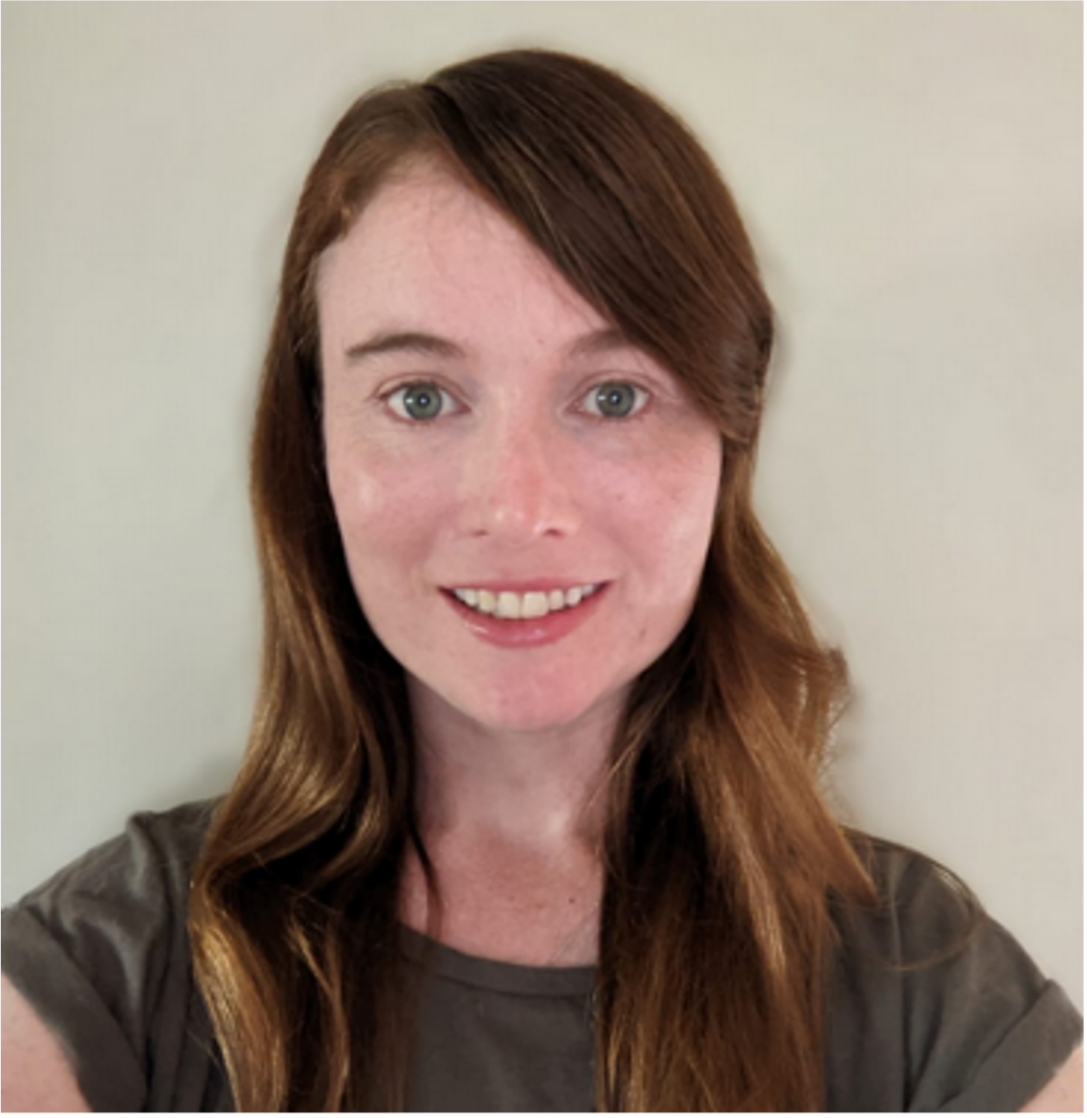
ACEMS Associate Investigator Kate Saunders
ACEMS AI Kate Saunders led work with ACEMS Partner Organisation, CSIRO, on a new bushfire-relevant project, entitled ‘Complementing official wind records with crowd-sourced observations for improved forecasts of wind and fire behaviour’. Following major bushfires in the past twenty years, public and political attention has been drawn to the potential for fuel reduction burning to reduce bushfire risk and damage. The paper published from this work provides a major update to a 2002 Parliamentary Library publication examining the issue. It incorporates the findings of recent research and the numerous inquiries published since then. Kate’s work has informed UNESCO, EU Security and Defence, International Union for Conservation of Nature (IUCN) and the Australian government including:
- Bushfires and fuel reduction burning - Cited by Parliament of Australia on 28 Oct 2021
- World Heritage forests: Carbon sinks under pressure - Cited by the IUCN on 01 Jan 2021
- Impacts of natural hazards and climate change on EU security and defence - Cited by The Publications Office of the European Union on 29 Oct 2021.
In collaboration with industry partner Healthy Land and Water (HLW), ACEMS AIs Catherine Leigh and James McGree have developed an adaptive sampling design for low-cost vision-based flow-sensors and used spatial statistical stream-network models to generate flow predictions throughout a river system. This work provided HLW with new information vital for flood prediction and advanced warning of extreme events, as well as for water-allocation decisions and impacts on important ecosystem processes.
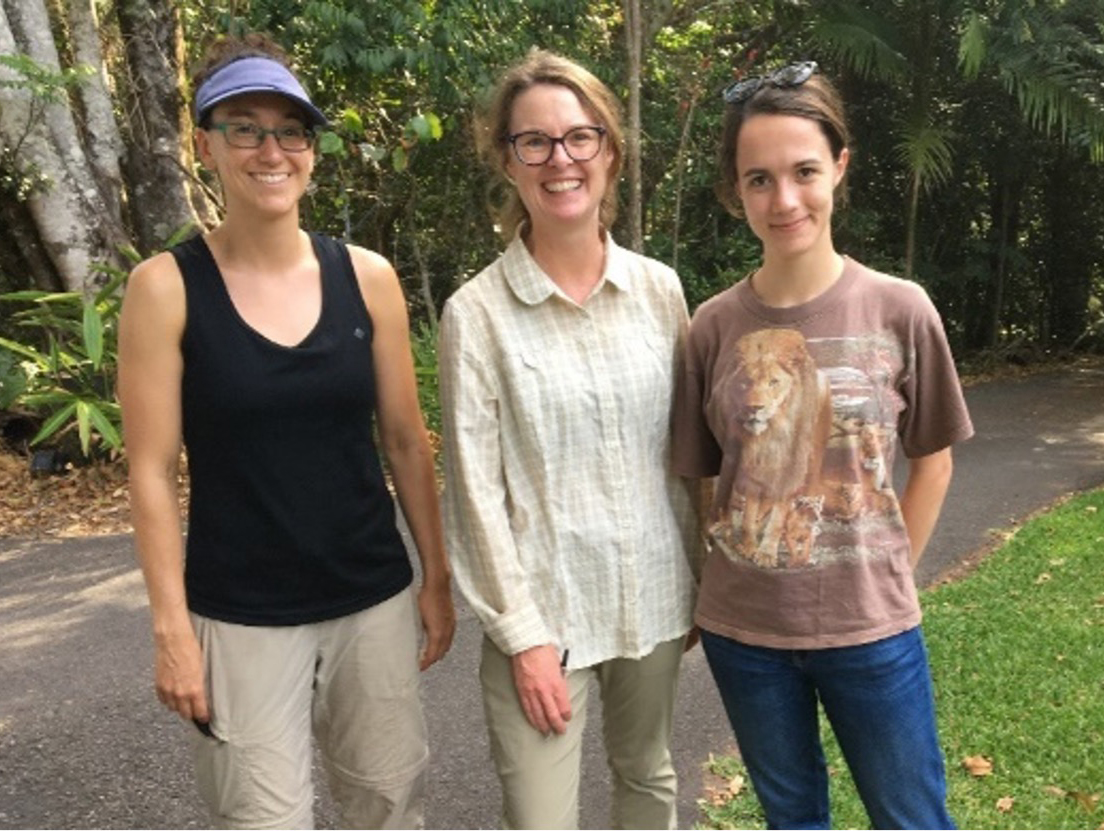

Left: ACEMS researchers AI Dr Catherine Leigh (middle) and PhD Student Grace Heron (right). Right: A sensor installed by the research team to monitor a waterway in Southeast Queensland.
ACEMS PhD student Mohammad Davoudabadi has been pursuing research in modelling and predicting carbon sequestration in agricultural settings. His paper in the journal of Environmental Modelling & Software received an Honorary Mention in the 2021 Tjanpi award for Best Student Paper in Environmental Statistics. Mohammad will take up a postdoctoral position at the University of Sydney in March 2022.
ACEMS AI Kate Helmstedt uses mathematics and decision science to model ecological systems and the ways people interact with them to design better environmental protection. She developed and strengthened new relationships with key environmental policy stakeholders in 2021: the Australian Antarctic Division, Australian Institute for Marine Sciences, and the Queensland Department of Environment and Science.
Kate hosted an ACEMS symposium on ‘Environmental Modelling for Better Predictions and Decisions’ with attendees and speakers from Data61, Queensland Department of Environment and Science, Fisheries Queensland, and four Queensland universities including students, ECRs, postdocs, MCRs, and senior academics. Hugh Possingham, Queensland Chief Scientist, and CI Kerrie Mengersen spoke on a panel at the symposium about using mathematics to make environmental impact. Kate raised the profile of mathematical ecology via her outreach through the Flying Scientists program in regional Queensland, Soapbox Science outreach bringing science to the streets, and ‘That’s What I Call Science’ podcast. Kate’s successes in the environmental decisions and mathematical ecology space were recognised with a Women In Technology (WIT) Rising Star Science award. Her 2021 work in collaboration with the Australian Antarctic Division on managing ecosystem collapse attracted media attention including The Guardian and First Dog On The Moon.
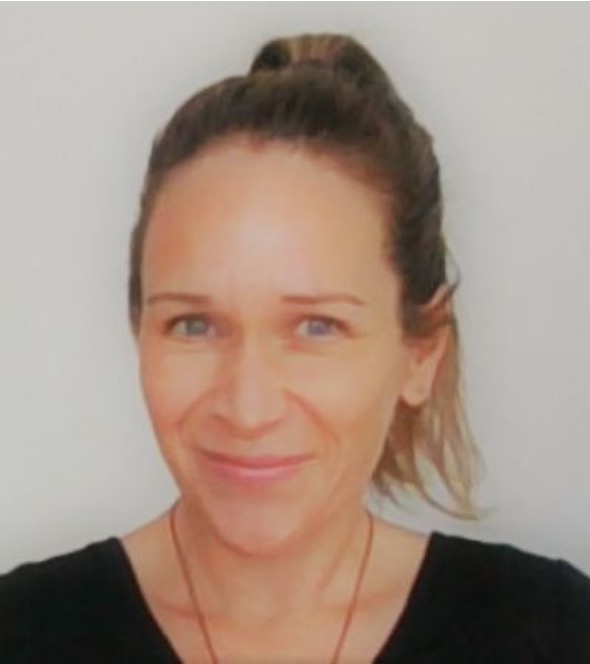
ACEMS Research Fellow Stephanie Clark
ACEMS CI Louise Ryan has been the lead scientist on a collaboration with the NSW Department of Planning, Industry and Environment (DPIE), using statistical modelling and machine learning to model bore water levels in the Namoi River catchment in northwest NSW. The project involves ACEMS Research Fellow Stephanie Clark, as well as Senior Research Scientist Dan Pagendam from the CSIRO. ACEMS CI Rob Hyndman has been involved in a high-level advisory capacity.
In previous work reported for 2020 and published in the International Statistics Review, Louise’s team compared machine learning approaches based on neural network models with classic time series methods to model the level of an underground aquifer in the Richmond River catchment in the northeast part of NSW. It was found that while each approach has some unique advantages and disadvantages, both did a remarkably good job at capturing changing patterns over time, as shown in the following Figure.

Observed (dark blue) and predicted (orange) groundwater levels from a classical time series model on the upper plot and with a neural network model on the lower plot. The classical prediction includes 80% and 95% prediction intervals, also shaded in orange
In a follow-up project for DPIE, the team set out to apply the same analyses to data from a different catchment area, the Namoi River in the north central-west part of the state. However, results were not nearly as good. It became quickly apparent that in contrast to the Richmond catchment, the Namoi analysis was significantly more complex due to this being an area of relatively low rainfall combined with high groundwater extractions to meet the demands of intensive agriculture and mining industries. During 2021, the team extended the model to encompass catchment wide information, using recently developed methods for global time series modelling. The simplest version of the model involved stacking data from multiple different aquifers into a single large dataset then fitting a multi-layer perceptron model (see Figure below for illustration).

The work was extended further using a recently developed algorithm called Deep AR, which incorporates autoregressive terms as well, along with a more sophisticated Long Short-term Memory (LSTM) modelling framework. The results are encouraging and will be helpful to the DPIE in terms of long-term planning and management of water resources. To illustrate how this might work, the following figure shows the model fitted to one of the monitoring bores in the Namoi catchment (observed data are shown in black, with predictions shown in blue). This modelling framework enables one to ask hypothetical questions such as “What would the bore water levels look like if there had been no extractions allowed?”. In the figure, the orange curves show what the levels might look like if all the extractions were set to zero. There is a clear impression that water levels would have stabilised. Clearly more work is needed, but the results are very encouraging.

PROSPEROUS SOCIETIES
A key component of major infrastructure planning is predicting usage. The ACEMS team at the University of Adelaide was sub-contracted to deliver the data analytics component of a $1M project that aimed to provide a simulation analysis of the proposed Women’s and Children’s Hospital in Adelaide, South Australia. Some key results on the arrival process at the Paediatric Emergency Department are shown in the figure below. Their findings have been extremely valuable to planners and managers in the development of more cost-effective infrastructure and more targeted health strategies.

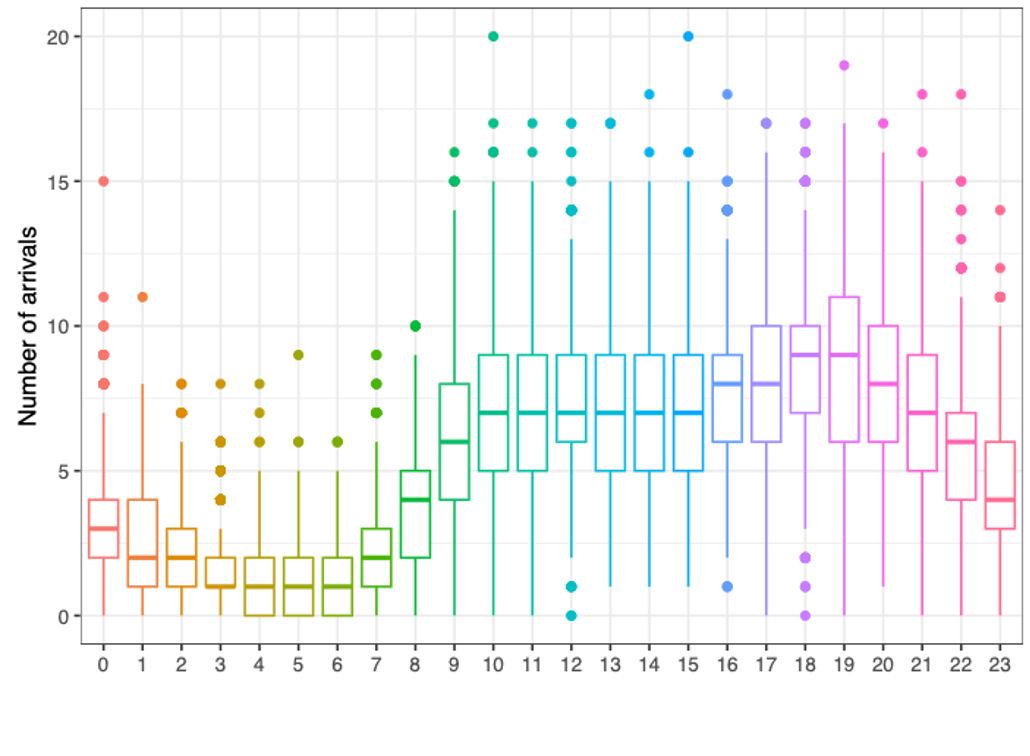
Left: This time series shows the total number of arrivals per day and highlights the impact of School Holidays. Right: This figure highlights the variability in the number of patients to arrive when considered by the hour of the day. It can be seen that there is a clear night-time effect, but also an evening surge.
ACEMS AI Steven Psaltis and CI Ian Turner have worked closely with the forestry sector to develop methods for enhancing their decision making. A key project investigated improving the returns from southern pine plantations through innovative resource characterisation. Working closely with the Queensland Department of Agriculture and Fisheries (QDAF) Forest Products Innovation Team and colleagues in QUT’s School of Mathematical Sciences, the ACEMS researchers developed analytical methods to predict the modulus of elasticity (MOE) of sawn timber boards, a key indicator of wood quality for structural purposes. Prediction of individual board MOE can enable enhanced decision-making on the management and allocation of the resource to different processors, and improve the processors’ ability to optimise grade allocation. This collaboration with QDAF led to a project on modelling the impact of continuous drying on key production and performance criteria of engineered wood structural elements. The simulations were able to accurately represent the continuous drying process, and showed excellent agreement with experimental data. This project was invaluable to industry, and helped support an investment in the expansion of Queensland’s timber processing industry.
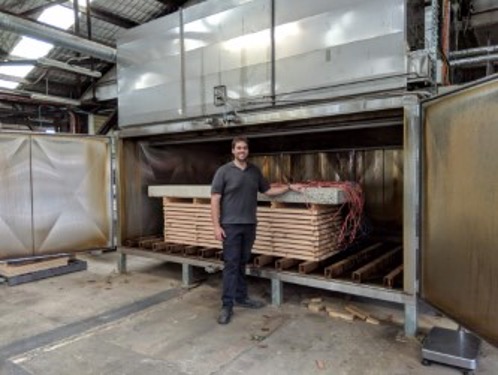
ACEMS AI Steven Psaltis
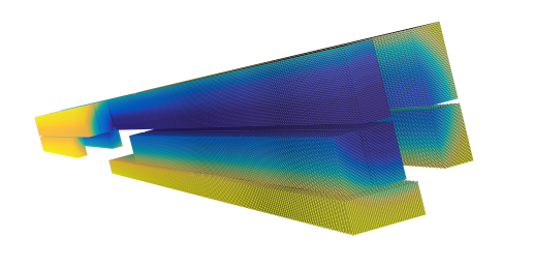

PhD student Wathsala Karunarathne, AI Mark Fackrell and CI Peter Taylor investigated optimal scheduling in queueing systems where there can be random arrivals of `walk-in’ customers as well as the scheduled customers. By transforming the problem to the Laplace domain, the team was able to design computationally efficient procedures for designing the optimal schedule in smaller systems and using the insight gained to develop heuristic procedures for larger systems.
Sport plays a key role in cultural, health, business and social domains of our society. ACEMS researchers at Monash, UNSW, UTS and QUT have undertaken various research projects with external sports partners in 2021. ACEMS researchers AI Paul Wu, CI Scott Sisson and AI Clara Grazian led a cross-node collaborative project with the Australian Institute of Sport and Queensland Academy of Sport to model recurrent injuries in athletes. This is a priority issue in high performance sport, as well as professional and recreational sport. The collaboration has resulted in a number of outputs, including a review paper on “A multidisciplinary review of potential methods for modelling subsequent sports injuries”. With ACEMS PhD student John Worrall, the team also investigated the use of Hawkes Processes, a type of self-exciting model in which an event creates a ripple effect of subsequent events, to model recurrent injuries. This model is also used by ACEMS researchers to describe a wide range of other phenomena such as terrorism and earthquakes. ACEMS CIs Louise Ryan, Scott Sisson and Robert Kohn worked together to analyse multivariate performance data in a group of elite junior soccer players. A Bayesian latent growth curve model was used to capture the effects of training over time, as measured in a series of physical and cognitive measures of performance.

ACEMS AI Paul Wu taking notes and monitoring automated data collection at a major swimming event.
In another sports project, ACEMS AI Edgar Santos-Fernandez led an international team of researchers to develop a new way to represent complexity of plays in team games such as basketball. The discovery of the ‘intrinsic dimension’ in high-resolution player tracking data led to new insights into differences between winning and losing teams, and teams playing at home and away. Overall, game-winners tend to have a larger intrinsic dimension (ID) which is an indication of more unpredictability and unique shot placements. Similarly, higher intrinsic dimension values are found in plays when the score margin is small compared to large margin ones. These outcomes can be exploited by coaches to obtain better offensive/defensive results. This work was published in the Annals of Applied Statistics.


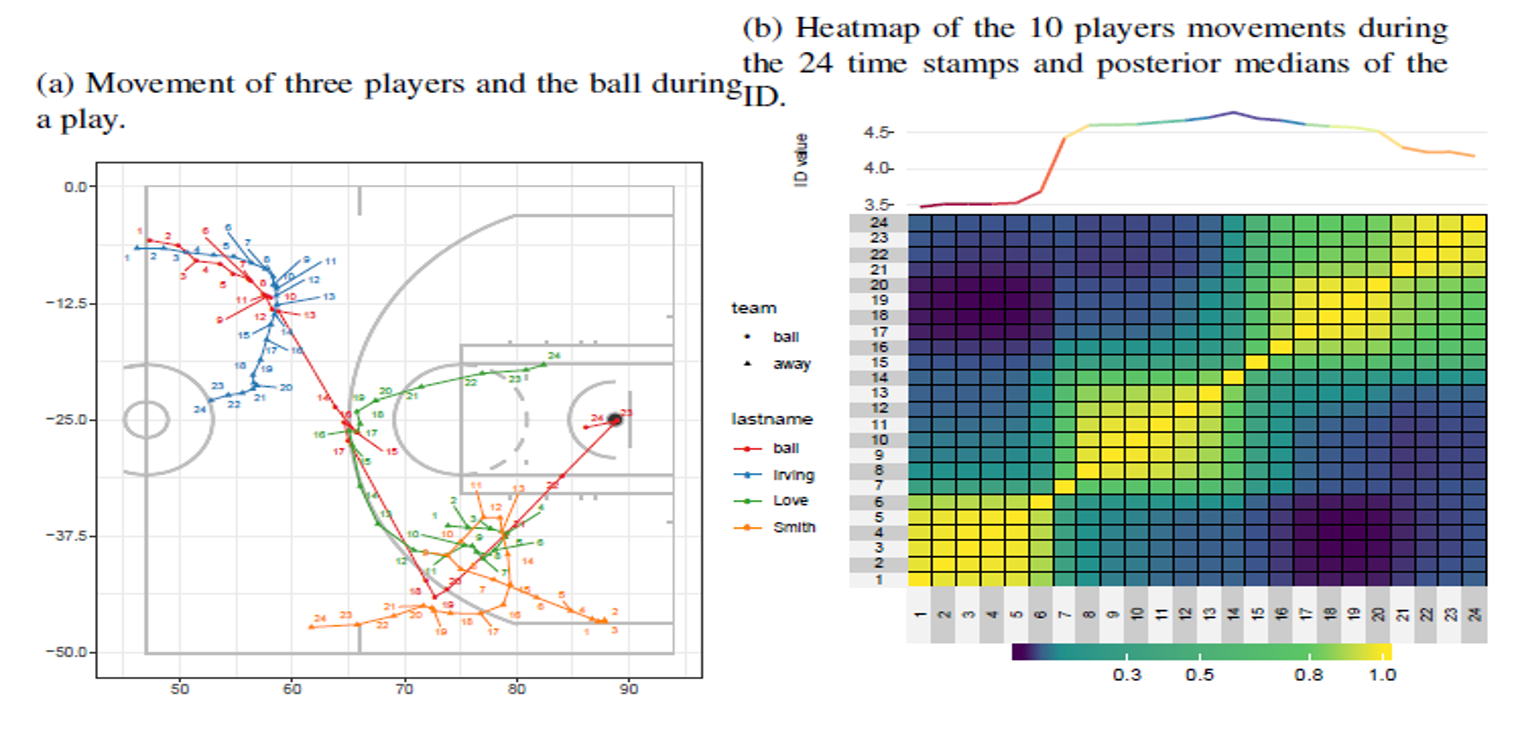
(a) The locations of the players and the ball for the first scored three-point field goal of the game Cleveland Cavaliers (CLE) and the Golden State Warriors (GSW) on the 25th of December, 2015. This play can be watched here. (b) The trajectory of three attacking players plus the ball, a heatmap of the co-clustering matrix and the intrinsic dimension (ID) for the first scored three-point field goal of the game by CLE.
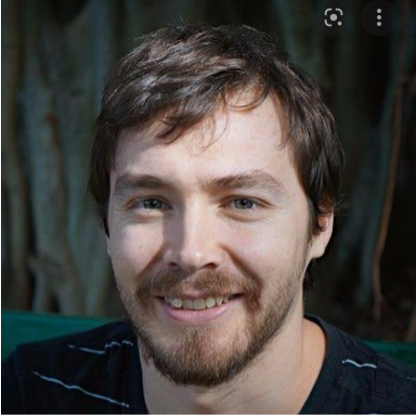
During 2021, ACEMS AI Chris Drovandi published two sports articles in The Conversation. The first one compared the three dominant male tennis players in the modern era, Rafael Nadal, Novak Djokovic and Roger Federer. This article was re-published by Canberra Times and Chris was invited to a radio interview with 88.3 Southern FM. The second article addressed the question of whether it was beneficial to bat first at the recent cricket T20 World Cup for men. Chris was invited for a radio interview with ABC Regional Victoria. During the summer of 2021/2022 Chris co-supervised a vacation research student on predicting player performance from domestic to international cricket. This was the start of a collaboration with Cricket Australia and Queensland Cricket.
During the past decade, Data Science has grown to become a major field, bringing together mathematical and statistical sciences, computer sciences, information sciences and the domain sciences in the common pursuit of ‘extracting knowledge from data’. In Australia and across the world, there are now many undergraduate and graduate programs, research centres and companies focusing on Data Science. ACEMS has been active in promoting mathematics and statistics as core disciplines in Data Science. ACEMS has also played a key role in the establishment of five Data Science Research Centres in four Australian States, led by nodes at QUT, University of Melbourne, Monash University, University of Adelaide and UNSW. ACEMS was also a founding partner in the Australian Data Science Network, which was established by several ACEMS members.
Another major initiative in Data Science was the call for international school curriculum in Data Science and an international training curriculum for teachers. ACEMS Affiliate Member, Nicholas Fisher, has been co-leading the International Data Science in Schools Project, which had its genesis in an ACEMS-funded workshop in 2016 and now involves statisticians, computer scientists, school teachers, curriculum experts and educators from Australia, Canada, England, Germany, New Zealand and the United States. Phase 1, which involved the design of the curricula, has been completed. Funding is now being sought for Phase 2, which will see the creation of the curriculum material. More details are available at www.idssp.org
Innovative methods for communication of ACEMS research to the general public is also a key part of the Informed Decisions program. Throughout 2021, ACEMS Masters student, Jack Ford Morgan, has been creating The Bridge: Your Guide to Science-Themed Tabletop Game Design to help spread awareness and interest in data science. The Bridge comprises a series of 30 videos with accompanying printable worksheets and materials, with links to games based on ACEMS research: Virtual Reef Diver: Tabletop Edition, Sats & Stats: Return to Earth, and the print-and-play games Stop the Spread and The Big Bite.

